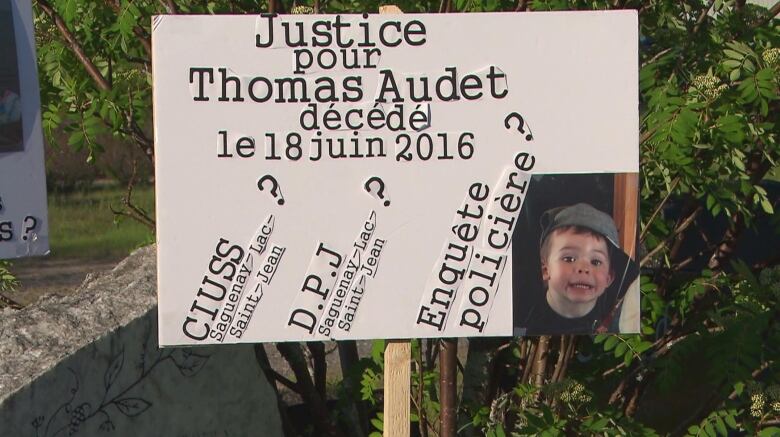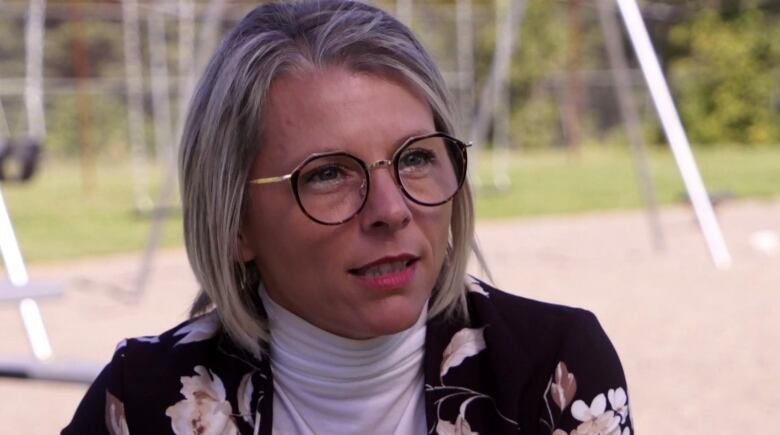Quebec youth protection agency's problematic software played role in toddler's death, report finds
Questions raised after 22-month-old Thomas Audet died in SaguenayLac-Saint-Jean

Problems with computer software used by Quebec's youth protection agency played a role in the death of a toddler in SaguenayLac-Saint-Jean, according to a report by the province's Human Rights and Youth Rights Commission obtained by Radio-Canada.
Thomas Audet died in June 2016 at the hospital in Alma, Que. He was just 22 months old.
The circumstances of Thomas's death aren't entirely clear. What is known is that before being taken to hospital, the child was staying with his mother and her new partner.
A month earlier, his case had been flagged to the youth protection agency, known by its French acronym, the DPJ.
In a 2017 report examining the handling of the case, the commission blamed "inconsistencies" in the DPJ's software for questionable decisions that appear to have delayed the evaluation of the boy's file.
The software, known as Systme de Soutien la Pratique (SSP), generates an analysis document based on responses to multiple-choice questions completed by DPJ staff.
The software, mandatory for youth protection services across Quebec, helps determine the urgency of each case.
In Thomas's case, the software appears to have produced a document with contradictory conclusions.
The child's vulnerability was initially described as "extreme," perhaps because he suffered a broken femur, a severe laceration of his ear and other injuries in the months leading up to his death.
'Let's see: A leg fracture, a laceration of an ear, a practically broken hand, a cut tongue and it's a surveillance problem!'- Andr Simard, Thomas Audet's grandfather
Ultimately, however, the software concluded that the chance of Thomas being in a vulnerable situation was "very weak."
Another troubling finding: the software ruled out physical abuse as a potential problem.
The SSP instead determined there was a risk of "educational neglect," which is tantamount to saying that the child was poorly supervised.
Andr Simard, Thomas's grandfather, said the software's conclusion didn't fit with the facts.
"Let's see: A leg fracture, a laceration of an ear, a practically broken hand, a cut tongue and it's a surveillance problem!"

Social worker never met child
According to the commission report, Thomas's case should have been deemed a Code 1, requiring "immediate intervention," which means his file would have been a priority for a social worker.
But the software concluded the case was a Code 3, which is to say Thomas was "not in immediate danger."
His file remained at the bottom of the pile, but even so, policy required that it be evaluated within 12 days.
But Thomas died 23 days later, without ever having been seen by a social worker.
Simard said the evaluation of the case should not have been left up to a piece of software.
"We decided it was the computer that was going to choose?" Simard said. "How can we rely on this, if no stakeholder meets the people involved?"
The four grandparents, along with the child's father, Sylvain Audet, filed a lawsuit against the CIUSSS SaguenayLac-Saint-Jean, the regional health and social services board which oversees the local youth protection agency.
The CIUSSS declined to comment, citing pending legal proceedings.

Software still in place
No one has been charged in relation to Thomas's death.
However, according to Radio-Canada sources, the findings of the police investigation are about to be forwarded to prosecutors, and criminal charges could eventually be laid.
Thomas's death shocked the region, and the local DPJ seems to have learned from the tragedy. Additional staff have been hired to reduce waiting lists, which is now the shortest in the province. The methods of analysis and staff training have also improved.
What has not changed, however, is the use of SSP, the software program designed in Quebec in 2001 by Sogique, the computer branch of Quebec's Ministry of Health and Social Services.
The problem, according to social worker and union representative Nancy Poulin, is the questionnaire lacks nuance.
"Sometimes your answer is not in the answer choices," she said.
"What we are offered does not work for issues with parents or children, for example. We must choose between answers that do not correspond to reality to be able to move on to the next question."
Designed to use artificial intelligence, the SSP sometimes generates reports contradicting the clinical judgment of the worker, who often spends fifteen hours meeting the child, parents and professionals. This generates absurd situations, according to Poulin.
"In that time, we return to our questions and try to make sure that the answer to our questions reaches the right decision," she said.

No scientific validation
The frustration of social workers is noted in a 2015 report commissioned by the Association des centres jeunesse du Qubec.
"The mandatory use of SSP in youth centres is not always appreciated by stakeholders, to the point that some of them seek to circumvent the norms of use," the report said.
The same report states the SSP has never been scientifically validated, unlike many other similar tools used in North America.
The SSP also does not contain an actuarial tool allowing it to better identify the risk of recurrence of physical abuse. It has not been revised since 2013.
A second report by the commission states the conclusions obtained when using the SSP "should not be a substitute for the professional judgment" of DPJ workers.
It recommended to Lucie Charlebois, who was minister responsible for youth protection under the previous Liberal government, that the SSP tool be revised and a new version be in place"no later than September 2018."
One year after the deadline, the SSP has not yet been modified by the Ministryof Health and Social Services, although in a statement, a spokesperson said it still wants to do so.
Translated and edited by Benjamin Shingler












_(720p).jpg)


 OFFICIAL HD MUSIC VIDEO.jpg)
.jpg)



























































































